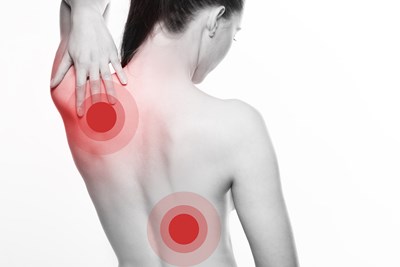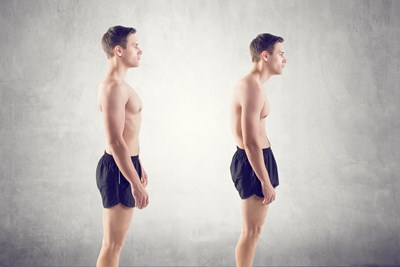Scoliosis is a medical condition in which a person's spine is curved from side to side. Although it is a complex three-dimensional deformity, on an X-ray, viewed from the rear, the spine of an individual with scoliosis may look more like an "S" or a "C" than a straight line. Scoliosis is typically classified as either congenital (present at birth), idiopathic (cause unknown), or neuromuscular (symptom of another condition). Scoliosis affects approximately seven million people in the United States. It occurs most often during the growth spurt just before puberty. While scoliosis can be caused by conditions such as cerebral palsy and muscular dystrophy, most scoliosis causes are unknown. Most cases are mild, but severe scoliosis can be disabling. Most children with scoliosis have mild curves and likely will not need scoliosis treatment with a brace or surgery. If a diagnosed child's bones are still growing, a doctor may recommend a brace. This won't cure scoliosis, or reverse the curve, but it can prevent further progression of the curve. A surgery called spinal fusion may be recommended for severe scoliosis treatment. Spinal fusion connects two or more of the spinal bones (vertebrae) together with new bone.
Scoliosis Symptoms
Scoliosis most often causes no symptoms in a child until the spinal curve becomes large. One might notice early signs with close observation. A child may have one shoulder or hip that looks higher than the other. Or the child's head does not look centered over the body. A child could possible have one shoulder blade that sticks out more than the other. The last early sign to watch for is if a child's waistline is flat on one side, or the ribs look higher on one side when the child bends forward at the waist. In adults, scoliosis may cause back pain and trouble breathing, but scoliosis is most serious in young children who are still growing. A curve in the spine may get worse as the child grows, so many experts believe screening for scoliosis is important so that any curvature in the spine is discovered early and monitored closely. A worsening scoliosis curve will also rotate or twist the spine. One should seek medical attention if he or she notices these signs or symptoms of scoliosis in a child. Mild curves can develop without the parent or child knowing it because the change is gradual and is usually painless.
Long-Term Scoliosis Symptoms
While most people with scoliosis have a mild form of the disorder, long-term scoliosis symptoms and complications can occur. As scoliosis gets worse, the bones of the spine rotate toward the inner part of the curve. If the upper part of the spine is affected, the ribs may crowd together on one side of the body and become widely separated on the other side. The curve may force the space between the spinal bones to narrow. The spinal bones may also become thicker on the outer edge of the curve. In severe scoliosis, the rib cage may press against the lungs and heart, making it more difficult to breathe and harder for the heart to pump. In very severe scoliosis, damage to the lungs and the heart may occur. When the function of breathing is compromised, the risk of lung infections and pneumonia increases. Adults who had scoliosis as children are more likely to have chronic back pain that people without scoliosis. Those who grew up without scoliosis treatment may develop arthritis of the spine. Neurological functionality may also be affected and tested to check for muscle weakness, numbness, or abnormal reflexes.
If you experience severe symptoms, you may need to work with your doctor to discuss your options for scoliosis correction.



